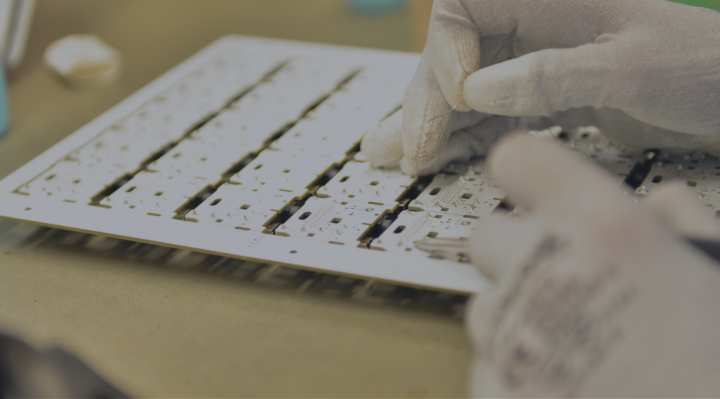OEMs who choose to outsource production and work with a contract EMS provider expect their partner to use adequate procedures, software, tools and materials during the manufacturing, inspection, testing and shipping of finished electronic assemblies. This includes rigorous quality controls to meet OEM requirements, the applicable standards and methods to react quickly to any errors affecting product quality.
While everyone makes mistakes, any issues should be identified and eliminated as soon as possible. This involves identifying the root cause of an issue and eliminating it, because only this approach can actually help reduce the risk of issues, avoid costly adjustments downstream in the production process as well as losses for OEMs and customer dissatisfaction.
Methods of improving production processes
For this very reason, manufacturing process improvement tools that play a key role in discovering, correcting and eliminating issues are so important. This is why EMS providers employ a variety of methods to deal with potential issues and improve processes, such as:
- FMEA – Failure Mode and Effect Analysis
- S5 allows a well-organised, clean and high-quality working environment to be maintained, which, for EMS providers, translates into improved product quality and more satisfied customers.
- The 5 Why/5W2H methodology allows an issue to be described accurately and completely, and its cause to be identified and eliminated.
- Poka-Yoke (mistake proofing, error proofing) prevents problems caused by mistakes
- The Pareto analysis is based on the assumption that, in any system, a small number of factors are responsible for the majority of the issues; and
- The 8D methodology, which we would like to discuss in this article.
The 8D Methodology
8D is a methodology for identifying and solving problems. Its basic goals are as follows:
- root cause analysis (RCA)
- correcting and eliminating problems in a team-based approach, and
- using solutions developed to improve existing processes and products.
The 8D methodology was developed by Ford Motor Company Ltd in the 1980s as a way of solving critical problems in the car manufacturing process, and is named after the 8-step procedure for identifying and resolving issues. At present, it is one of the most popular quality management methods and is used in a variety of manufacturing sectors – from the automotive industry to EMS providers to the aerospace industry.
The 8D report used in this method facilitates a structured approach to problem solving, guides the user through the change process and reduces the risk that an issue might reoccur. In this way, not only does it improve reliability of the production process and quality of the end products, and thus the satisfaction of OEMs and their customers, but also drives the continuous improvement process at the company.
The 8D steps
Initially, the 8D methodology had eight steps. However, an extra step (D0) involving planning and preparing was added later.
Step 9: D0: Planning and preparing
This is not a mistake. While added later, Step 9 should be at the beginning of the whole process.
It involves the analysis of information on the problem which is transferred to the EMS provider in the form of:
- internal complaints due to problems identified during quality control, inspections and testing
- issues with parts sent by suppliers discovered during delivery checks
- customer complaints
The way this information is processed (e.g. preparing a non-conformity table) affects each of the subsequent steps in the 8D methodology.
Step 1: Team establishment
Problems are best resolved by people who are familiar with the ins and outs of a company’s production process and know-how.
Because of this, when forming a team, be sure to invite specialists who have experience in the areas to be analysed. After all, they will be the ones responsible for recommending and implementing adequate solutions.
Step 2: Problem description
A key step is to describe the problem in an accurate, detailed and understandable way.
When defining the problem, it is helpful to use the measures: What, When, Who, Where, How, and elements of the 5 WHY2H method: the Ishikawa diagram, or the Is/Is Not approach, which help you determine what is a problem (Is) and what is not (Is not).
Step 3: Implementation of Interim Containment Actions (ICA)
If your problem is serious, before implementing a definitive solution, which might take some time, it is smart to take the interim containment actions available to temporarily defuse the crisis and avoid escalating the situation.
These actions can be withdrawn once PCA (Permanent Correct Actions) have been identified and implemented.
Step 4: Root Cause Analysis (RCA)
At this stage, it is important to understand the real source of the problem, as this is the only way to prevent reoccurrence.
For the analysis, quality assurance tools can be used, such as: the 5 WHYs (what, when, who, where and how), or the Is/Is Not method mentioned earlier. They allow you to reflect on why an error occurred (occurrence) and why it had not been detected earlier (detection), and by postponing the moment of drawing a conclusion, they allow you to get to the root the problem.
Step 5: Permanent Corrective Action (PCA)
Although interim containment actions had been implemented to contain the crisis, once the actual causes of a problem have been identified, corrective actions need to be developed to resolve the situation effectively and permanently.
Actions taken at this stage include the establishment of criteria for failure mode and effect analysis (FMEA).
Step 6: Implement corrective action
Once the corrective actions have been identified, they need to be implemented. This stage can take a long time, as corrective actions may involve e.g. introducing an additional control, an inspection or a test, or an entirely new, extra process.
It is important to monitor the effectiveness of the implemented actions using hard, measurable indicators.
Step 7: Prevent recurrence
The purpose of this stage is to plan systemic preventive actions to eliminate the risk of the problem recurring. These can include modifying systems, processes, procedures and documentation, but also implementing the Poka-Yoke error prevention method.
Step 8: The process ends
Once the problem is resolved, it is useful to discuss with the team the insights and lessons learned from the problem solving process, and prepare an incident report.
Benefits from the use of the 8D methodology by contractual EMS providers
Since the 8D methodology focuses on three key aspects:
- identifying the root cause of the problem
- implementing interim containment actions to mitigate effect on the customer, and
- implementing a permanent solution to precent reoccurrence
it is an extremely useful tool for almost any type of problem, non-conformity or malfunction. What is more, the 8D methodology not only facilitates effective problem solving, but also helps improve products, optimise procedures and processes, and prevent many problems in the future. As a result, it helps avoid major losses, ensuring high product quality and good relations with OEMs.
In the case of contract EMS providers, the 8D methodology allows quick and effective identification of the problem and protects the business from slip-ups in the future. This is why at Assel the 8D methodology is in use for many years with all kinds of problems and defects, as it allows lessons to be learned from mistakes, and processes and procedures to be continuously improved. Ultimately, this continues to be our goal.







